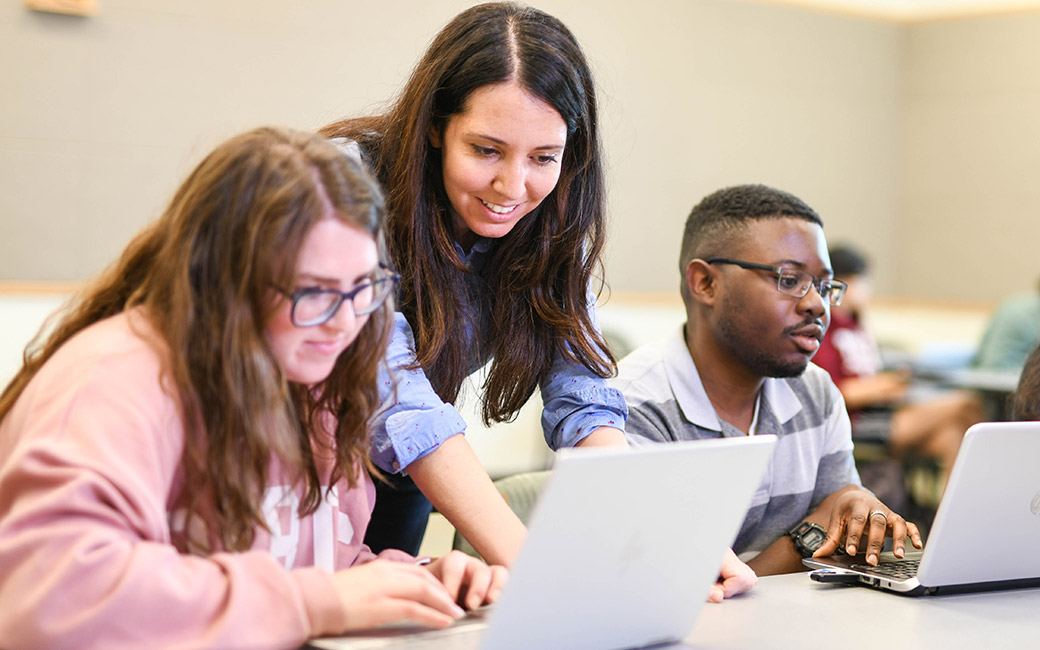Faculty Spotlight
English professor and author Jeannie Vanasco talks about her work as a writer, and what students can expect in her creative writing classes. She also recommends three books every college student should read.

You teach creative nonfiction. How do you explain what creative nonfiction is to folks who may not know?
The first question I was asked when interviewing for my job at TU: “What is creative nonfiction?” Of all the questions I did not prepare for. So I said, “Honestly, I don’t know.” I’m still trying to figure out the answer. The name itself creates confusion. We don’t call fiction creative fiction or poetry creative poetry. But what I love about creative nonfiction is its indefinability. Essays and memoirs fit within it as easily as standup comedy and podcasts. I tell students: I’m interested in what creative nonfiction does as opposed to what it is. Creative nonfiction investigates and explores—without needing to answer—some of our most serious questions: What is a self? What is memory? What is truth? It’s a great genre for philosophers and poets to practice. It’s not just for journalists. That’s because creative nonfiction concerns reflection more than it concerns reporting. By the end of the semester, if students still feel confused about what creative nonfiction is, I consider it an excellent sign. A good liberal arts education teaches you the distinctions, and only after that can you figure out why the distinctions don’t really exist.
How did you decide to be a writer and what work have you done as a writer?
When I was a girl, I went to the library every week with my parents. Neither of them went to college. My dad didn’t graduate from high school. But they both read constantly. Seeing how much they valued books, that influenced me for sure. And what I loved about reading back then is what I love about it now—the experience of spending time with another consciousness. I wanted, and still want, to create that experience for others. I think that’s why I write.
I’ve published poems, book reviews, newspaper and magazine articles, short fiction, essays, and memoirs. And I’ve worked a lot of jobs closely connected with writing. I helped edit a literary magazine for several years. I was also a researcher and editor for a French philosopher, a proofreader for an independent publisher, a researcher for a documentary television series about media accountability. I read poetry submissions for a general interest magazine. And I co-managed a citizen journalism project based in Sudan.
How can creative writing be of use to students who have no ambition to be writers?
In creative writing classes, students learn how to analyze psychology and motives. They also become better communicators. A lot of my friends studied creative writing and now work in fields such as law, business, politics, computer programming, marketing, nonprofit fundraising. If you can write well, you can apply it to almost any field.
What could students expect to do in one of your creative writing classes?
My students read contemporary books—usually those published within the past few years—and they practice imitating each author’s writing voice. A lot of those authors then visit the classroom to meet with students. I tend to invite authors in their twenties or thirties. That’s because I want students to understand that a professional writing career is within their reach. Another reason I invite authors: I want students to hear perspectives different from my own. For example, I believe that facts should serve as formal constraints in creative nonfiction, but several of the assigned authors believe that bending a narrative’s chronology is perfectly acceptable. Some of them also embrace composite characters. I want students to know about such debates within the creative nonfiction field and develop their own opinions. Later in the semester, students workshop their original work, and then we talk about what originality even means.
What are a few titles you think every college student should read?
bell hooks’s Feminism is for Everybody
Lynda Barry’s What It Is
Weike Wang’s Chemistry